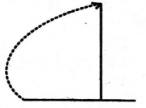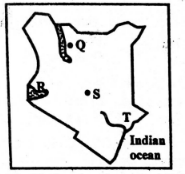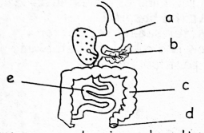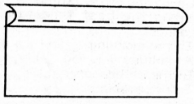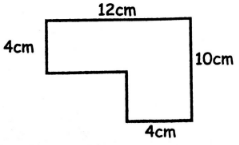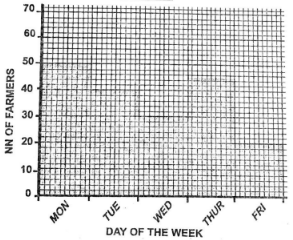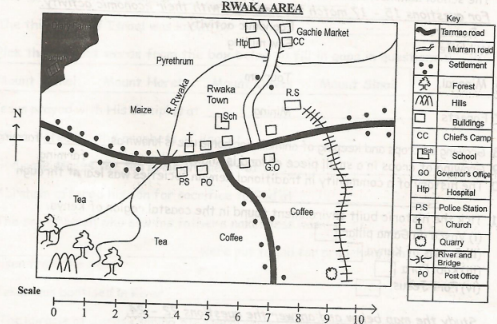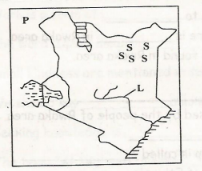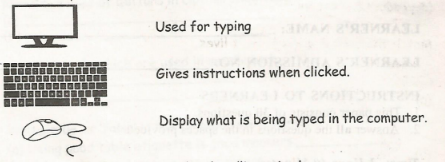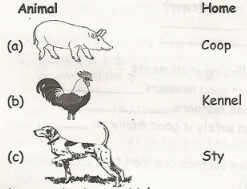Displaying items by tag: End Term 2
English Questions and Answers - Grade 5 End of Term 2 CBC Exams 2022 Set 2
SECTION A
Question 1 - 5: Read the conversation below and answer questions
Adasa: I think malaria is a very dangerous disease.
Masha: Yes, it is. It is a killer disease. But I think typhoid is worse.
Adasa: What about AIDS: I think it's the worst disease.
Masha: I agree with you. AIDs has killed very many people. We should do our best to keep it away from us.
- Which is the worst disease?
- AIDS
- Tyhoid
- Malaria
- Tuberculosis
- Which is the comparative adjective of the word best ______________________
- Good
- Better
- Gooder
- 'Best'
- _____________ thinks that malaria is a very dangerous disease.
- Masha
- Adasa
- James
- Lucy
- The following diseases have been mentioned in the conversation except
- AIDS
- Typhoid
- Malaria
- Covid -19
- The following pronouns have been used in the conversation except
- I
- It
- you
- It's
Question 6 - 13: Read the passage below and answer questions
Little children eat or drink anything that comes across their paths. Without any doubts, you have come across them eating bananas which have flies or are rotten, All these are caused by grown ups. Many grown ups store poisons, paraffin and different varieties of soaps where children could reach them easily. On getting these items, the grown ups are not aware that the children have taken
these bad items.
If in a house there are children below five yers, the following precautions should be taken label all containers with soaps, perfumes and poison to ensure that the labelled tins are out of children's reach. All bottles should be kept on top of cupboards or any other place whose height is beyond the reach of children
There are those parents who store poison in food containers. This is dangerous. When these innocent children come across them, they believe it's food. They end up swallowing poison or chewing morsels of fungicide and the end result is death.
- Who are being blamed for the dangers in the house according to the passage?_____________________
- Grown ups
- Children
- Teachers
- Neighbours
- Which one of the following is not a dangerous item kept in the house?
- Poisons
- Paraffin
- Soaps
- Milk
- Why do children eat anything they find?
- It's their hobby
- They don't listen to their parents
- They don't know what is good or bad
- They are sweet
- What is the meaning of the word 'morsels' as underlined in the passage?
- A large amount
- A lumpsome
- A type of gungi
- A Small amount
- All the following should be avoided to keep children safe except?
- Keep the medicine near children
- dispose left overs near children
- keep medicine away from children
- leave bottles without labels
- What is the final results after a child takes poison
- Fainting
- Death
- Suffocation .
- Deep sleep
- Which mistake is done by most parents?
- Having alot of rules
- Leaving medicines carelessly
- Bringing up many children
- Employing househelps
- Which is the best title for the passage?
- Medicines in hospitals
- Children disobedience
- Children with medicine
- Parents and medicine
Question 14 - 22: Read the text below and fill in with the correct answers
The long ___ 14___ day had at last 15 to attend the graduation. Everyone__16____ eager. ____17____ The young pupils lined ____18____ excitedly. Each had something to ____19____, it seemed ____20____ were eager to see their parents___ 21____ to ____22____ the very important day.
-
- waiting
- wait
- awaited
- waited
-
- arrive
- come
- entered
- noticed
-
- is
- were
- was
- has
-
- date
- party
- day
- ceremony
-
- up
- on
- between
- off 19.
-
- told
- say
- speak
- question
-
- Whole
- All
- Each
- Every
-
- coming
- came
- come
- gone
-
- look
- seen
- saw
- witness
Questions 23 - 30: Complete the following similes.
- As brave as a ___________________
- snake
- lion
- cat
- dog
- As white as a _______________________
- snow
- Ash
- shirt
- Clouds
For question 25 - 26. Fill in the spaces with the correct possessive pronouns.
- This is my book. It is ___________________
- mine
- yours
- his
- hers
- That cow belongs to them. It is __________________
- there's
- their's
- theirs
- there's
Identify adverb of time in the following sentences
- The bell rang at noon.
- bell
- rang
- at
- noon
- I was too late to arrive in school.
- too
- late
- arrive
- school
For questions 29 - 30. Choose the correct short form of the underlined words
- We will not attend the meeting
- willn't
- won't
- will not
- woun't
- I was not told to sweep the class.
- wasn't
- weren't
- wasen't
- wasend
COMPOSITION
Write an interesting composition about.
MY PET
MARKING SCHEME
- A
- B
- B
- D
- D
- A
- D
- C
- D
- C
- B
- B
- C
- C
- B
- C
- D
- A
- B
- B
- A
- D
- B
- A
- A
- C
- D
- B
- B
- A
Mathematics Questions and Answers - Grade 5 End of Term 2 CBC Exams 2022 Set 2
- A school had nine hundred and ninety eight thousand, six hundred and forty five chickens. What is the number of chickens written in symbols?
- 998 654
- 988 645
- 998 645
- 989 65
- In a certain grassland, there were 84 629 birds. What is the total value of digit 4 in this number?
- Thousands
- 4 000
- 40 000
- Tens of thousands
- What is the shortest length of a string from which equal pieces measuring 12 cm and 18 cm can be cut?
- 6cm
- 48cm
- 16cm
- 36cm
- In the year 2019, 248 618 students joined universities in a certain country. In the following year, 366 211 students joined universities. How many students joined universities in the two years?
- 614 829
- 624 729
- 614 729
- 624 8295.
- There are 96 487 trees in Maserati forest. Out of these, 23 265 are natural while the rest are planted. How many planted trees are in Maserati forest?
- 119 752
- 72 322
- 73 222
- 73 122
- What is the next number in the pattern below?
4, 8, 24, 96, ____________- 100
- 480
- 520
- 104
- In a green grocery, 5/8 of the fruits are mangoes and the rest are oranges. If 3/8 of the mangoes were sold, what fraction of the mangoes remained?
- ½
- 8/8
- 5/8
- 2/0
- Aminata had 12 pineapples. She bought 6 more pineapples. She then sold all the pineapples equally to 9 customers. How many pineapples did each customer buy?
- 3
- 8
- 7
- 2
- A member of county assembly had 336 packets of maize flour. He shared the packets equally to 14 needy families. How many packets did each family get?
- 24
- 350
- 322
- 28
- In the first attempt, an athlete finished a marathon race in 4.26 hours. In the second attempt, she reduced the time by 1.18 hours. What time did she take in the second attempt?
- 5.44
- 3.08
- 3.18
- 5.34
- A pupil ran round a school play ground and covered a distance of 1 900m. How many kilometres and metres are these?
- 19 km 00m
- 1 km 900m
- 19 km 900m
- 1 km 00m
- A square flashcard is 16cm long. What is the area of the flashcard?
- 32cm2
- 4cm2
- 64cm2
- 256cm2
- In a birthday party, juice was stored in 8 containers. Each container had 6 litres 200 ml. How much juice was stored?
- 48L 1 600 ml
- 48L 600 ml
- 49L 600 ml
- 49L 1 600 ml
- Mariarosa drew a shape like the one drawn below on the white board.
What is the area of the shape?- 399cm2
- 80cm2
- 40cm2
- 289cm2
- Petrol in a 40 litres 800ml container was emptied to fill 8 equal containers. What was the capacity of each container?
- 3L 150ml
- 6L 50ml
- 4L 200ml
- 5L 100ml
- Kiriti rode his bicycle from home to school and took 840 seconds. How many minutes are these?
- 84
- 14
- 7
- 12
- A Mathematics Activities lesson started at the time shown below.
If the lesson took 2100 seconds, at what time did it end?- 12.40
- 1.45
- 12.45
- 1.40
- Maimuna is 25kg 200g heavy while her younger brother is 6kg 300g lighter than her. What is her younger brother's mass?
- 31kg 500g
- 18kg 900g
- 19kg 900g
- 19kg 500g
- Work out:
- 79kg 200g
- 2kg 1 200g
- 3kg 200g
- 2kg 200g
- During a music lesson, a teacher wanted learners to do 3 activities within the remaining 27 minutes 6 seconds. If each activity was to take equal time, how long would this be?
- 71 minutes 18 seconds
- 9 minutes 12 seconds
- 9 minutes 2 seconds
- 70 minutes 78 seconds
- Which of the following shows a correct line of symmetry?
- A Grade 4 pupil saw a shape with the following properties:
- It had four angles.
- The figure had four sides.
- All the angles were right angles.
- Opposite sides were equal.
- Not all sides were equal.
The shape the pupil saw was likely to be- a triangle.
- an oval.
- a square.
- a rectangle.
- Study the illustration below.
The demonstration above shows a- a half turn.
- a full turn.
- an anti-clockwise turn.
- a quarter turn.
- Japolo had p bottle tops for an Art and Craft Activity. If he gave 19 bottle tops to his friend, which of the following expressions shows the number of bottle tops he remained with?
- 19 + p
- p x 19
- p - 19
- 19+ p
- Machunga had 3 oranges. She bought m. more oranges. In total she had 10 oranges. How many oranges did she buy?
- 7
- 13
- 5
- 4
- Sanaipei carried 24 beads to school. On her way, x beads got lost. She was left with 19 beads. How many beads got lost?
- 5
- 43
- 7
- 6
The table below shows the number of animals seen during an educational tour.
Animals Tally Elephants llll llll lll Buffaloes llll llll llll l Lions llll llll llll llll ll Zebras llll llll l Gazelles llll ll
- Which animals were the least?
- Lions
- Gazelles
- Elephants :
- Zebras
- How many more lions than buffaloes were seen?
- 6
- 38
- 5
- 37
- What was the total number of elephants and lions?
- 32
- 35
- 13
- 22
- How many animals were seen altogether?
- 69
- 79
- 59
- 49
MARKING SCHEME
- C
- B
- D
- A
- C
- B
- C
- D
- A
- B
- B
- D
- C
- A
- D
- B
- C
- B
- D
- C
- B
- D
- D
- C
- A
- A
- B
- A
- B
- A
Creative Art & Social Studies Questions and Answers - Grade 5 End of Term 2 CBC Exams 2022 Set 1
- Which of the following shows a 3 dimensional letter?
- Book jackets are used to
- cover books.
- prevent cold.
- decorate books.
- cover the title of the book.
- The type of puppet which is manipulated using strings is called a
- glove puppet.
- hand puppet.
- rod puppet.
- marionette.
- Grade 5 learners wanted to make wax crayons. They brought the following items to class:
Sharon: paraffin.
Kevin: bee wax.
Brian: metallic container.
Carol: rubber bands.
Who brought an item that was unnecessary?- Sharon.
- Carol.
- Kevin.
- Brian.
- A teacher drew a form like the one below.
Which of the following techniques did the teacher use to show shading effect?- Cross hatching.
- Smudge.
- Crayon etching.
- Collage.
- Which one of the following is not a primary colour?
- Yellow.
- Red.
- Blue.
- Brown.
- A cooking stick can be carved using
- plasticine.
- plastic.
- clay.
- wood.
- Coiling is a technique associated with
- leather shoes.
- plastic buckets.
- clay pots.
- fabric.
- Which of the following indigenous crafts can be made using plain and twine weaving technique?
- leather wallet.
- floor mat.
- bucket.
- pot.
- What is the use of adhesive in mounting artwork?
- Balancing the artwork at the centre of the frame.
- Making the artwork look bright.
- Easening the work of display.
- Sticking the cutouts.
- Jakoya plays instruments during folk dances in his Maporomoko.village. We can say that Jakoya is
- an instrumentalist.
- a musician.
- a composer.
- a soloist.
- Painting the face with red clay before a folk dance is called
- body tattooing.
- costuming.
- body adornment.
- using omaments.
- When playing note C on the descant recorder,
- use the thumb of the left hand to cover the back hole.
- cover the thumb hole with your left thumb.
- do not blow air into the descant recorder.
- use the index finger to cover the top.
- All wind instruments produces sound when
- shaken.
- hit.
- bowed.
- blown.
- Below is a wind instrument called coro.
Which community plays the instrument above?- Mijikenda.
- Agikuyu.
- Abagusii
- Luo
- Which of the following aspects of a folk song is the most important?
- Message.
- Instrumentation.
- Participants.
- Occasion.
- Body movements or actions used to show the meaning of words or ideas in a song are called
- moods.
- tones.
- dictions.
- gestures.
- Which of the following types of songs is wrongly matched with its description?
- Topical songs sung to enlighter the community,
- Action songs sung during a certain community activity.
- Sacred songs sung during religious activities.
- Patriotic songs sung to show love for the country.
- Which of the following is not a part of the descant recorder?
- Head joint.
- Foot joint.
- Arm joint.
- Middle joint.
- Which of the following lines is not found in the Kenya National Anthem?
- Kila siku tuwe na shukrani.
- Raha tupate na ustawi.
- Natulinde uhuru na amani.
- Nasi tujitoe kwa nguvu.
- Tourism has contributed to the economy of Kenya by all the following except
- promoting local industries.
- providing basic needs to families in the land
- earning the country foreign exchange.
- promoting cultural practices.
- Which one of the following is not a tourist attraction in Kenya?
- Language groups.
- Cultural activities.
- Natural sceneries
- Wildlife.
- Which one of the following is not a modern means of communication?
- Which of the following means of communication is audio-visual?
- Magazine:
- Radio.
- Newspaper.
- Television.
- Which of the following road signs shows the presence of a round about?
- All the following can help us reduce road accidents in our local roads except
- issuing more driving licences to motorists.
- reporting careless drivers.
- observing road signs.
- avoiding playing near roads.
- Below is a method of inland fishing in Kenya.
The fishing method shown above is called- long lining.
- purse seining.
- trawling.
- harpooning.
- Which of the following crops is not grown under horticulture?
- Fruits.
- Flowers.
- Sugarcane.
- Vegetables.
- Dairy farming in Kenya takes place in all the following areas except
- Trans Nzoia.
- Kisii.
- Nandi.
- Nairobi.
- Which one of the following is not a resource found in Kenya?
- Museums.
- Lakes.
- Minerals.
- Forests
- Which of the following is not a source of money for the county government?
- Parking fees.
- Grants from well-off countries.
- Sale of trading licences.
- Rents from county houses.
- Use the map of Kenya below to answer questions 32 to 35.
- Use the map of Kenya below to answer questions 32 to 35.
- The National park marked Q is called
- Sibiloi.
- Malka Mari
- Losai
- Meru
- The lake marked R is shared by three of the following countries except
- Kenya
- Rwanda
- Tanzania
- Uganda
- The mineral mined at the place marked S is
- fluorspar.
- limestone.
- soda ash.
- diatomite.
- The river marked T is called river
- Tana
- Athi
- Nzoia
- Ewaso nyiro
- Who went around river Jordan mainly preaching to the people about repentance?
- Jesus.
- Elisha
- John the Baptist.
- Elijah.
- During the baptism of Jesus, all the following took place. Which one did not?
- Heaven opened.
- Holy Spirit came down in the form of a dove.
- A voice came from heaven.
- Darkness covered the whole land.
- Why is baptism important in the life of a Christian? It
- makes Christians acquire new names.
- makes a Christian a member of God's family.
- makes Christians known by other members of the church
- is a way of bonding with church leaders.
- When Jesus calmed the storm,
- His power over nature was revealed.
- the disciples were in deep sleep.
- His clothes turned crystat white.
- angels appeared to Him.
- Jesus showed compassion for the needy by
- performing miracles wherever He went.
- feeding a multitude.
- dying on the cross.
- promising them the Holy Spirit.
- Jesus healed the paralysed man in
- Galilee
- Bethany
- Carpenaum
- Gethsemane
- The parable of Jesus about the lost sheep teaches Christians
- the value of attending church services.
- about the recovery of the lost human
- about the importance of keeping property
- the value of tending well to domestic animals.
- According to Jesus' teachings during the Sermon on the mountain, happy are the pure in heart because
- they will see God.
- God will call them His children.
- God will be merciful to them.
- God will reward them.
- Which of the following is pot a good way of empowering the needy?
- Giving them capital to start businesses.
- Giving them money for upkeep daily.
- Teaching them legal skills of acquiring wealth
- Employing them for a pay.
- Which of the following books of the Bible is in the Old Testament?
- Acts.
- Titus.
- Hagai.
- Thessalonians.
- Who among the following was a blind man in the Bible?
- Bartimaeus.
- Zacchaeus.
- Zachariah.
- Jeroboam.
- John the Baptist's mother was called
- Annah.
- Rebecca.
- Elizabeth.
- Mary.
- When Jesus healed the ten lepers, how many were not thankful?
- One.
- Five.
- Seven.
- Nine.
- As Grade 5 learners were playing football, Miriam accidentally stepped on Kamene. As a Christian, what should Kamene do?
- Sit down and cry.
- Forgive Miriam.
- Report Miriam to the teacher.
- Avoid playing with Miriam.
- A person who always tells the truth is said to be
- honest.
- obedient.
- Polite.
- kind.
ISLAMIC RELIGIOUS EDUCATION,
- How many ayahs are there in surah Al-kawthar?
- 6
- 4
- 3
- 5
- Tameehim bihijaratin min sijjeelin is an ayan from suratul
- Fiyl
- Maun
- Kafirun
- Lahab
- Which of the following is not a lesson from surah Al-Quraish?
- Never take the blessings of Allah for granted.
- Allah sends us blessings and bounties.
- Allah blessed the Qureish with security.
- Never underestimate Allah.
- Which of the following attributes of Allah means all forgiving?
- Al-Haafidh.
- Al-Ghafar.
- Al-Aalim.
- Al-Malik.
- Which one of the following is not a characteristics of angels? Angel
- can change form.
- were created from nur.
- can either be males or females.
- do not have parents.
- Prophets had different qualities for character formation. Which one of the following is one of them? They were
- intelligent.
- arrogant.
- slanderers.
- dishonest.
- Which one of the following is a miracle performed by prophet Musa(AS)?
- He had clear signs of Allah's mercy on him
- Turning a rod into a snake.
- His hand shone like the moon when he put it in his armpit.
- Striking the red sea and separating the waters.
- When we perform swalah correctly, we earn
- points.
- gifts.
- curses.
- thawab.
- Normally, Taraweh is performed
- in the morning.
- in the afternoon.
- after Asr.
- at night.
- Turning away from Qibla during swalah
- strengthens our faith.
- nullifies swallah.
- is a condition in Islam.
- must always be observed.
- Which one of the following is not an optional prayer?
- Fajr
- Qabliyah
- Taraweh
- Baadiyah
- Which on of the following is not a form of swadaqah?
- Smiling at each other.
- Removing harmful objects from the way.
- Visiting the sick.
- Keeping time during swallah.
- Which one of the following is not a condition for swalah? One has to
- be in ritual purity.
- wear new clothes.
- be a Muslim.
- have sound mind.
- The wife of prophet Muhammad (SAW) was called
- Amina.
- Zeitun.
- Khadijah.
- Ruqayah.
- As a Muslim child, it is the obligation of my parents to
- obey me.
- catter for my basic needs.
- buy me computer games.
- do my homework for me.
MARKING SCHEME
- C
- A
- D
- B
- A
- D
- D
- C
- B
- D
- A
- C
- B
- D
- B
- A
- D
- B
- C
- C
- B
- A
- D
- D
- B
- A
- B
- C
- D
- A
- B
- A
- B
- D
- B
CRE IRE - C C
- D A
- B D
- A B
- B C
- C A
- B A
- A D
- B D
- C B
- A A
- C D
- D B
- B C
- A B
Integrated Science Questions and Answers - Grade 5 End of Term 2 CBC Exams 2022 Set 1
SCIENCE AND TECHNOLOGY (20mks)
- The following are protective clothes while visiting a school farm. Which one is not ?
- Gloves
- Overalls
- Gumboots
- Shirts
- The following are examples of non- flowering plants. Which one is not ?
- Moss
- Fern
- Cedar
- Grass
- Which one of the following group of plants contains harmful plants?
- Sodom apple, datura, euphorbia
- Datura, maize, sodom apple
- Beans, stinging, nettle, oxalis
- Sodom apple, millet, sorghum
- Which one of the following is a fungi?
- Bread
- Bread moulds
- Pollen grains
- Rotting logs
- Animals that have a backbone are known as
- invertebrates
- vertebrates
- reptiles
- insects
- Study the list of animals below: Tilapia, Lizards, Snakes, Crocodiles, Newts, Toads, Salamanders
From the list above pick the group that has amphibians only?- Toads, salamanders, newts
- Tilapia, toads, newts
- Lizards, snakes, crocodiles
- Salamanders, snakes, newts
- Which of the following bones of a human skeleton is wrongly matched with where it is found?
- Skull - head
- Ribcage - chest region
- Backbones - the back of the body
- Limb bones - the face
- The following are diseases that affect the breathing system. Which one is not?
- Tuberculosis
- Asthma
- Influenza
- HIV/AIDS
- Diseases that are caused by drinking contaminated water are known as
- Respiratory diseases
- Deficiency diseases
- Water borne diseases
- Comunicable diseases
- The following are ways of preventing cholera. Which one is
- Drinking treated water
- Washing hands before taking meals
- Drinking boiled water
- Disposing feaces in the rivers
- Which one of the following is a parasite?
- Lice
- Bee
- Housefly
- Butterfly
- Identify the type of internal parasite shown below.
- Hookworm
- Roundworm
- Pinworms
- Tapeworm
The diagram above shows a model of the human breathing system. What does the part marked X represent?- Gullet
- Wind pipe
- Oesophagus
- Bronchus
- The following are characteristics of amphibians. Which one is not?
- They have a moist skin
- They lay eggs
- They are cold blooded
- They do not take care of their young ones
- A chameleon responds to changes in the environment by
- running away
- changing its colour
- hiding in its shell
- flying off
- The following are parts of a computer except
- monitor
- mouse
- keyboard
- chair
- The teeth we use to chew food are known as
- canines
- incisors
- molars
- nails
- Name the digital device shown below
- camera
- laptop
- mobile phone
- computer
- The diagram below shows the human digestive system.
Water and mineral salts are known as absorbed in the part marked _____________- a
- b
- c
- d
- Three of the following can sink in water. Which one cannot?
- Nail
- Coin
- Bottle top
- Stone
AGRICULTURE
- Learners of Kasarani Primary School noticed that there were V- shaped trenches left by running water in their fields. Which type of soil erosion had taken place?
- Rill
- Gulley
- Sheet
- Splash
- Which of the following human activities contributes to soil erosion
- Mulching
- Afforestation
- Deforestation
- Crop rotation
- Putting dry grass on top of the seed on the ground after planting is known as
- Sowing
- gardening
- thinning
- mulching
- The following are small animals that destroy crops. Which one is not?
- Moles
- Weaver birds
- Monkeys
- Dogs
- Which of the following is not worn when handling small wild animals?
- Gloves
- Masks
- Gumboots
- Suit
- The following are types of soil except
- sand
- clay
- loam
- manure
- Identify the farm tool shown below
- Jembe
- Panga
- Rake
- Spade
- Which of the following indegenous plants grows in dry areas?
- Pigweed
- Sorghum
- Yams
- Black night shade
- The removal of unwanted plants is known as
- Prunning
- Weeding
- Uprooting
- Thinning
- What is the best time to plant seedlings?
- In the morning
- At midday
- In the afternoon
- In the evening
HOMESCIENCE
- Which of the following is a factor that should be considered when buying shoes?
- Date of manufacture
- Size of the shoe
- Number of pairs
- Name fo the seller
- The following are factors that lead to time wastage. Which one does not?
- Uncontrolled use of media
- Preparing a work plan
- Excessive playing
- Poor planning of time
- Which of the following is not a material used for making surfaces found at home?
- Clay
- Tiles
- Wood
- Cement
- Which one of the following is not a communicable disease?
- Chicken pox
- Scabies
- Measles
- Diabetes
- Pouring excess water on a wooden surface can lead to
- Rotting
- Baking
- Drying
- Cleanliness
- Which of the following is not a macro-nutrient?
- Fats
- Vitamins
- Carbohydrates
- Proteins
- Which of the following is not a symptom of Kwashiorkor?
- Brownish and thin hair
- Swollen body parts
- Protruding belly
- Pale finger nails
- Grade five learners made the stitch shown below. What is the name of the stitch?
- Hemming stitch
- Even tacking stitch
- Herringbone stitch
- Back stitch
- Which of the following is not a step in laundry work?
- Sorting
- Blousing
- Washing
- Mending
- Pulses are also known as
- Cereals
- rice
- maize
- legumes
PHYSICAL AND HEALTH EDUCATION
- How many players are there in a soccer match?
- 11
- 14
- 22
- 7
- Which of the following is not a content of a First Aid Kit?
- Pain killers
- Bandage
- Razor blades
- Gloves
- In relay which material cannot be used to improvise a batton?
- manila
- Plastic paper
- Stick
- Iron metal
- Which is the best resting position?
- Sitting
- Lying on the back
- Lying on the left side
- Lying on the right side
- When should First Aid be administered in games and sport?
- Immediately after the accident
- A few minutes after the accident
- At the hospital
- After seeing the doctor
- Below is a rounder's bat. Name the part labelled B
- Grip
- Barrel
- Knob
- End cap
- Warm up activities are important because they
- relax the muscles without being sore
- help the muscles stretch without being injured
- help the to prevent injuries
- help the hearbeat to go back to normal gradually
- Which game is played in the equipment shown below?
- Netball
- Volleyball
- Handball
- Basket ball
- The following are skills learnt during rope skipping. Which one is not?
- Wounded duck
- Skier
- Volley
- Straddle
- A score in rugby is called?
- run
- goal
- try
- point
MARKING SCHEME
- D
- D
- A
- B
- B
- A
- D
- D
- C
- D
- A
- D
- B
- D
- B
- D
- C
- A
- C
- C
- B
- C
- D
- D
- D
- D
- D
- B
- B
- D
- B
- B
- A
- D
- A
- A
- D
- D
- B
- D
- C
- A
- B
- B
- A
- A
- C
- B
- C
- C
Kiswahili Questions and Answers - Grade 5 End of Term 2 CBC Exams 2022 Set 1
Some mazungumzo yafuatayo kisha ujibu maswall 1-5.
(Mwalimu na wanafunzi wanajadiliana kuhusu umuhimu wa kuyatunza mazingira)
Mwalimu: Hamjambo wanafunzi?
Wanafunzi: (Wakiamka sawia) Hatujambo mwalimu, shikamoo.
Mwalimu: Marahaba (Anawaashiria wakae. Wote wanaketi na kushukuru.) Naam, leo ningependa tuzungumze kuhusu namna na umuhimu wa kuyatunza mazingira kwa hivyo...
Matayo: (Anaunyanyua mkono wake) Samahani mwalimu, mazingira ni nini?
Mwalimu: (Akitabasamu) Matayo huishi vituko! Ndilo nililotaka kueleza. Mazingira ni yale yote yanayotuzunguka. Hebu pendekezeni njia mbalimbali za kuyatunza mazingira
Manyanga: Nadhani ni vyema kukata nyasi ndefu ili kuharibu makao ya mbu.
Kaisari: Ni vyema pia kutunza vyanzo vya maji kama vile mito, chemichemi, mabwawa na maziwa.
Pendo: Nikiongezea, si vyema kutumia mbolea nyingi zaidi hasa za madukani ili tusiyaathiri maji na udongo.
Mwalimu: Nimefurahia mno michango yenu. Zipo njia nyingi za kuyatunza mazingira. Kimsingi, umuhimu wa kuyatunza mazingira ni kuwafanya viumbe waishi maisha salama.
- Mazungumzo haya yaliandaliwa majira ya saa ngapi?
- Saa sita adhuhuri.
- Saa mbili asubuhi.
- Saa kumi jioni.
- Hatujaelezwa.
- Ili kuonyesha heshima kuu, mwalimu alipowaamkia wanafunzi, wote
- walisimama ili kupokea salamu yake.
- walitaka kuchangia katika majadiliano
- walitaka kujua maana ya mazingira.
- walitaja umuhimu wa kuishi katika mazingira safi.
- Ni mwanafunzi yupi aliyemkatiza mwalimu alipokuwa akiongea?
- Manyanga .
- Matayo
- Kaisari
- Pendo
- Kulingana na mazungumzo haya, yote yanayotuzunguka ndiyo
- mazingara.
- hewa.
- miti.
- mazingira.
- Mwishoni, mwalimu alifurahishwa na nini?
- Heshima ya wanafunzi wake.
- Umuhimu wa kuyatunza mazingira.
- Michango ya wanafunzi wake.
- Njia mbalimbali za kuyatunza mazingira.
Soma kifungu kifuatacho kisha ujibu maswali 6 hadi 8.
Siku moja paka na mbwa walienda karamuni. Mwenyeji wao, panya, aliwakaribisha kwa mikono miwili. Wageni waliketi sebuleni kwenye makochi maridadi, mekundu, kama damu.
“Habari za mtokako?" Panya aliwaamkia wageni kwa heshima. "Njema sana!” wageni walijibu pamoja huku wakitabasamu. Baadaye, panya aliwasha runinga na kuwaambia wageni wake, “Tazameni televisheni. Mimi naelekea mekoni kuwapikia chakula.” Mara, huyoo! Akaenda jikoni. Haraka, alipika nyama na kuitia mchuzi wa maziwa.
- Paka na mbwa waliandaliwa nini na mwenyeji wao?
- Nyama na maziwa
- Njugu na maziwa.
- Maziwa na mifupa.
- Chai na nyama.
- Kabla ya panya kuelekea mekoni,
- aliwaandalia wageni wake chakula.
- aliwasha televisheni.
- alipika nyama.
- alitia maziwa katika nyama.
- Panya alienda jikoni
- kuwasha runinga.
- kununua chakula.
- kupika chakula.
- kuwakaribisha wageni.
- Kati ya hawa, ni mnyama yupi hajatajwa katika ufahamu?
- Paka
- Panya
- Mbwa
- Sungura
Soma kifungu kifuatacho kisha ujibu maswali 9 hadi 12.
Lengo la elimu ni kumsaidia mtoto kukuza ujuzi na vipawa na kukuza maadili ya maisha pamoja na maisha ya kiroho. Leo, mwalimu si mkufunzi au msimamizi bali ni msaidizi na mwelekezi. Hapa, mwalimu hudokeza au kutoa habari za juujuu tu. Ni jukumu la mwanafunzi kuleta umakinifu na kutafuta undani wa habari za mwalimu. Bila shaka, mwalimu anatarajiwa kumsaidia mwanafunzi katika kuufikia undani huo. Mwalimu hampi mwanafunzi ujuzi wowote bali humwonyesha jinsi anavyoweza kuupata ujuzi yeye mwenyewe. Mtoto anapozaliwa, ujuzi huwa ndani yake nao husubiri kuamshwa. Mwalimu amwonyeshe mtoto pale ujuzi ulipo na jinsi anavyoweza kuufanyia mazoezi hadi utokeze vilivyo na kumfaa.
- Kulingana na kifungu, baada ya mwalimu kudokeza jambo fulani, mwanafunzi
- atatafuta ukweli kulihusu.
- atamtegemea katika kila jambo.
- ataweza kupita vizuri katika mitihani.
- atashindwa kabisa kumwelewa.
- Kabla ya ujuzi ulio ndani ya mtoto kuonekana, ni lazima ujuzi huo
- uongozwe.
- uamshwe.
- utokeze.
- ugunduliwe.
- Katika miaka ya sasa, mwalimu ni
- mkufunzi na msimamizi.
- msaidizi na mkufunzi.
- mwelekezi na msimamizi.
- mwelekezi na msaidizi.
Soma kifungu kifuatacho kisha ujibu maswali 13 hadi 15.
Serikali ya nchi hii inawataka watoto wote wapelekwe shuleni wakasome kwa sababu masomo ndio ufunguo wa maisha. Watu wanaowaajiri watoto hata wasisome wanafaa kuhukumiwa ili kupunguza maovu kama hayo.
Mtoto ambaye hana elimu siku hizi huwa na shida nyingi kupita kiasi kwa sababu hawezi kupata ajira nzuri ukubwani. Hii ndiyo sababu serikali inahimiza kila mtoto kupata elimu. Zamani, watoto hawakuwa wakisoma kwa sababu hawakujua umuhimu wa elimu maishani
mwao.
Ili kuzuia magonjwa na njaa, elimu huwa muhimu. Ili kudumisha adabu njema na nidhamu, elimu huwa lazima. Watoto waliolemewa na masomo huwa wa kurandaranda mitaani, wezi au watendaji wa mambo mabaya katika jamii.
- Ni gani si kweli kulingana na taarifa?
- Masomo ni muhimu maishani.
- Serikali inataka watoto wote wasome.
- Zamani, watoto wote walisoma.
- Ni vyema kuwaelimisha watoto.
- Kulingana na kifungu, mtoto ambaye hana elimu siku hizi
- huwa na shida.
- hupendwa na wengi.
- hupata kazi.
- huajiriwa.
- Katika aya ya mwisho, tumeambiwa kuwa watoto wasiosoma huweza kuwa
- wezi na wafanyakazi.
- wa kurandaranda na wenye bidii.
- wenye bidii na wezi.
- wa kurandaranda na wezi.
Soma kifungu kifuatacho. Chagua jibu lifaalo zaidi kati ya yale uliyopewa
Siku hiyo tulikuwa tumeingoja kwa hamu na ghamu. Sote tulifika ____16____ na mapema tukiwa tayari kuabiri ____17____ kuelekea mjini Mwambasani. Hii ilikuwa mara yangu ya ____18____ kuenda huko. Sikuwa nimewahi kwenda huko. Tuliingia ____19____ tukiwa na furaha sana. Mara dereva alilitia gari ufunguo na safari _____20_____
-
- asubuhi
- jioni
- adhuhuri
- usiku
-
- baiskeli
- basi
- ndege
- meli
-
- moja
- mwisho
- tatu
- kwanza
-
- njiani
- safari
- basini
- barabarani
-
- ikaanza
- ukaisha
- ikaendelea
- ukaanza
Katika swali la 21-30, jibu swali kulingana na maagizo uliyopewa.
- Kati ya hizi, ni nomino ipi isiyo katika ngeli ya U-ZI?
- Uteo
- Uzi
- Upishi
- Ufunguo.
- Tulimwona batamzinga akiogelea bwawani. Nomino iliyopigiwa mstari ni
- nominoambata.
- nomino ya wingi.
- nomino dhahania.
- nomino kitenzi jina.
- Kati ya maneno uliyopewa, ni lipi litakuwa la pili katika kamusi?
- Mshikaki
- Mswaki
- Msaada
- Msaragambo
- ii
- iv
- iii
- i
- Mkufu ni pambo ambalo huvaliwa .
- kichwani.
- miguuni.
- shingoni.
- mikononi.
- Chagua sentensi iliyoakifishwa vibaya.
- Juma, Roda na Maria walialikwa shereheni.
- Maembe maparachichi na mananasi hununuliwa wapi.
- Ukimwona, mwambie aje kwangu.
- Je, mliwaona wanyama wapi mbugani?
- Ni upi wingi wa sentensi hii? Karatasi ilichafuliwa na mtoto.
- Karatasi zilichafuliwa na watoto.
- Makaratsi yalichafuliwa na watoto.
- Karatasi zilichafuliwa na mtoto.
- Karatasi ilichafuliwa na watoto.
- Ni yupi kati ya hawa ni ndege wa porini?
- Kuku
- Bata
- Batabukini
- Mwewe
- Kitenzi imba katika kauli ya kutendwa huwa
- imbia.
- imbiwa.
- imbwa.
- imbaimba.
- Chagua kinyume cha sentensi ifuatayo:
Mgeni amesimama karibu na mfalme.- Mgeni hajasimama karibu na mfalme
- Mwenyeji ameketi mbali na malkia
- Mwenyeji amesimama karibu na
- Mgeni ameketi mbali na malkia.
- Kanusha kauli ifuatayo kwa usahihi.
Wewe umeimba vizuri. Wewe- haujaimba vizuri.
- umeimba vibaya.
- hujaimba vibaya.
- hujaimba vizuri.
MARKING SCHEME
- D
- A
- B
- D
- C
- A
- B
- D
- C
- A
- B
- D
- C
- A
- D
- A
- B
- D
- C
- A
- C
- A
- B
- C
- B
- A
- D
- C
- B
- D
English Questions and Answers - Grade 5 End of Term 2 CBC Exams 2022 Set 1
Read the following conversation and then answer questions 1 to 5.
Mother: Come here my son. Bring your books with you books with you. I'd like us to check the arrangement of your work in every learning area. Come on, take the books out.
Son: Of late, I have been arranging my work neatly. Our class teacher, Miss Tari, told all of us the importance of doing so.
Mother: Please open your Mathematics exercise books, both class work and homework as I check English.
Son: Here, can't you see? This is how our Mathematics teacher wants us to arrange our work. Isn't it neat, mama?
Mother: Wow! I am very proud of both you and your teachers. All the work looks well arranged, neat, marked and corrections done. Indeed, you deserve a present from me, son! Come on let us go to the supermarket. I can't wait to get you a gift.
Son: Yees!
- What did the mother want to check from his son's books?
- The amount of work given by the teachers
- The arrangement of her son's work.
- Some unmarked work, if any,
- The cleanliness of the son's books.
- Whose idea was it to always be arranging the work neatly? The
- mother's
- son's
- class teacher's
- pupils'.
- Towards the end of the conversation, the mother seems
- disappointed.
- disorganised.
- sad.
- happy.
- Evidently, the mother thinks that the teachers
- are doing a good work.
- laze around mostly.
- arrange the pupil's work neatly.
- need to be transferred for a better work organization.
- Why did the son deserve a gift?
- His work was quite disorganised.
- There was a supermarket near their home.
- He had pleased his mother.
- The teachers arranged his work well
Read the passage and then answer questions 6 to 9.
Otieno was playing with his younger sister outside the house. Their mother had told them not to kick the ball hard because it could hurt someone or break a window pane. Otieno kicked the ball to his sister. She kicked it back to him. After some time, Otieno decided to kick the ball hard to see whether his sister could catch it. His sister dived to catch the ball but missed it. The ball broke one of the window panes of the house. Otieno's mother was very angry with the children. She took away the ball and told them that they would not play with it again.
- According to the mother, kicking the ball hard would?
- hurt a window pane or break someone.
- break the window panes of the house
- hurt somebody accidentally.
- break a window pane or hurt somebody
- Which game do you think Otieno and his ball hard would sister were playing?
- Netball
- Football
- Basketball
- Handball
- Why couldn't Otieno's sister catch the last ball?
- She feared to be hurt.
- It was kicked so hard.
- She wanted it to break the window pane
- She did not see it.
- What was the children's punishment?
- Not playing with the ball again.
- Not playing again.
- Using a different ball.
- Playing far from the house.
Read the passage and then answer questions 10 to 12.
Trees are always exciting to look at. Many people like their homes surrounded by trees. Many hotels are located in areas with many trees. When you look at a tree, what you see first is the bark that protects the tree trunk and branches. The bark at the bottom is old, rough and cracked. At the top, the bark is young and smooth.
The tallest tree alive today is over 360 feet high! It is a coast redwood growing in California in the USA. There is enough wood in its trunk to build over 300 houses! The other half is underground. These are the roots pushing their way through the thick earth. They can spread out through the soil as far the tree is high.
All people, young and old, should try to make the world beautiful by planting trees. Since the trees are already growing, we should take care of them.
- What have we been told about the redwood in California? It
- has a soft bark.
- has a lot of wood in its bark.
- can build many houses.
- is good for firewood.
- The bark at the bottom of a tree
- is cracked, old and rough.
- can build over three hundred houses.
- looks smooth and young. It
- is rough, young and cracked.
- Trees should be planted by
- young people.
- old people.
- those who do not use them.
- all.
Read the passage and then answer questions 13 to 15.
I hardly slept that night. I kept on thinking about the following day. We were to have a school trip to Amboseli National Park. Those who had paid for the trip were lucky. They would see many wild animals like zebras, elephants, gazelles, buffaloes and giraffes among others. My parents had made the payment and I would accompany the other pupils.
We were to travel by bus. The bus arrived very early in the morning. The class teacher read the list as we boarded the bus. I selected a seat next to the window where I would enjoy looking outside as we travelled.
- The first sentence means that the writer
- slept very hard.
- did not sleep at all.
- did not sleep well.
- stayed awake the whole night.
- According to this passage, who were lucky?
- Those who planned to pay for the
- The pupils who did not pay for the trip. ,
- All the pupils in the writer's class.
- Those who had paid for the trip.
- Which of the following animals has not been mentioned in the passage?
- Lions
- Gazelles
- Zebras
- Elephants
Read the passage below. It contains blank spaces numbered 16 to 20. For each blank space, select the best alternative from the choices given.
Of all the learning areas, I like Mathematics more. It is my ___16___ because I never have difficulty with it and always get good marks in tests. I suppose I am ___17___ to be born with a clear-thinking brain. The wonderful thing about Mathematics is that besides the ___18___
there's nothing else to remember. Every step in solving a ___19___ is done logically. Unlike in some other learning areas, remembering dates and other facts is hard compared with the ease and ___20___of Mathematics reasoning
-
- wonderful
- better
- subjects
- favourite
-
- cursed
- genious
- lucky
- luckier
-
- formulae
- notes
- punishments
- homework
-
- question
- problem
- equation .
- division
-
- simple
- simplified
- simply
- simplicity
For questions 21 to 23, choose the correct question tags to complete the sentences.
- Yesterday you were late for classes,
- weren't you?
- were you?
- aren't you?
- are you?
- I am the best dancer in our school,
- am I?
- aren't I?
- can't I?
- isn't it?
- She did not come to school yesterday,
- didn't he?
- did he?
- did she?
- didn't she?
For questions 24 to 27, choose the correct order of adjectives to fill in the blank spaces
- Wambua's room has a __________________ carpet.
- red circular oval
- red oval circular
- oval red circular
- oval circular red
- Mr. Jakoya wears a _________________ jacket.
- baggy, big old
- big old baggy
- baggy old big
- big baggy old
- There is a ____________________ fort near Maserati animal orphanage.
- huge tall ancient
- tall ancient huge
- huge ancient tall
- tall huge ancient
- We saw a ________________ table in Miss Masumbuko's office
- small new oval
- new oval small
- small oval new
- new small oval
In questions 28 to 30, select the best alternative to fill in the blank spaces.
- Mwajuma and I __________________ visit the zoo next week.
- will
- shall
- are
- could
- The cabinet secretary ____________________ announce the results.
- shall
- are
- is
- will
- They ___________________ bring us new toys tomorrow.
- shall not
- have
- will
- are
MARKING SCHEME
- B
- C
- D
- A
- C
- D
- B
- B
- A
- C
- A
- D
- C
- D
- A
- D
- C
- A
- B
- D
- A
- B
- C
- A
- D
- A
- C
- B
- D
- C
Mathematics Questions and Answers - Grade 5 End of Term 2 CBC Exams 2022 Set 1
- What is the number 100093 written in words?
- One hundred and ninety three thousand.
- One hundred thousand and ninety three.
- One million and ninety three.
- One thousand and ninety three.
- The population of four towns was recorded as 76 890, 23 908, 1700 and 6539 people respectively. What is the population of the four towns arranged in an ascending order?
- 76 890, 6539, 23 908, 1700
- 23 908, 6539, 76 890, 1700
- 1700, 23 908, 6539, 76 890
- 1700, 6539, 23 908, 76 890
- What is the place value of digit 3 in the number 79.130?
- Thousandths
- Hundredths
- Tenths
- Tens
- Work out; 462 900
+ 219 098
__________- 681 998
- 271 998
- 281 998
- 681 832
- What is the G.C.D. of 12 and 18?
- 72
- 6
- 18
- 3
- What is the total value of digit 8 in the number 58 431?
- 800
- 80 600.
- Thousands
- 8000
- Round off 8962 to the nearest hundred
- 8900
- 9000
- 8800
- 8960
- Work out: 651 x 37 =
- 11087
- 23081
- 23 087
- 24 087
- How many hours are there in 200 minutes?
- 31/3 hrs
- 3½ minutes
- 23/2 hrs
- 3½ hrs
- Calculate the perimeter of the figure below
- 120cm
- 44cm
- 36cm
- 28cm
- Which one of these figures shows a reflex angle?
- 875 textbooks were given to seven schools. If each school received an equal share, how many books were given to each school?
- 6 125
- 882
- 125
- 868
- Subtract 356 from 100 000,
- 100 356
- 199 644
- 99 644
- 64 400
- Work out; 3/4 + 1/2
- 11/8
- 2/3
- 1¼
- 3/8
- Jane drove from Kisumu to Nairobi and back. The distance between the towns she passed through are shown in the following diagram. Calculate the distance she covered
- 350km
- 315km
- 702km
- 700km
- What is the place value of digit 7 in the number 975 608?
- Ten thousands
- 7 500
- 7000
- 70 000
- Kamau weighs 59km and Joyce weighs 63.5kg. What is the difference in their mass?
- 1.2kg
- 8.0kg
- 3.2kg
- 4.5kg
- During Mwangi's birthday party 3/5 of his cake was eaten. What fraction of the cake was left?
- 1/5
- 3/5
- 1/10
- 2/5
- Karegi travelled for 5½ hours. For how many minutes did he travel?
- 330 min
- 330 hrs
- 30 min
- 300 min
- Wanja bought 40 oranges. She later found out that 1/8 of them were bad. How many oranges were good?
- 20
- 25
- 35
- 5
- Arrange the fractions in order from the largest to the smallest.
5/6, 1/3, 3/4, 5/8- 5/6, 3/4, 5/8, 1/3
- 1/3, 5/8, 3/4, 5/6
- 5/6, 5/8, 3/4, 1/3
- 5/8, 5/6, 3/4, 1/3
- What will be the time 30 minutes after time shown on the clock face below?
- 12.15
- 12.30
- 12.45
- 1.45
- Susan carried 2kg of sugar and James carried 10kg of cotton. Who carried a heavier load?
- Susan
- James
- Both
- None
- Find the area of the figure below
- 800cm²
- 400cm²
- 60cm²
- 120cm²
- Work out: 519 x 823
- 6 747
- 427137
- 53 457
- 427 037
- Find the volume of a cuboid measuring 5cm by 6cm by 4cm.
- 160cm3
- 15cm3
- 30cm3
- 120cm3
- Add: 0.034 + 0.1 + 20 + 1.001
- 3.1341
- 31.3411
- 30.001
- 20.1341
The table below shows the attendance of farmers of a meeting. Use it to answer questions 28 - 30
- How many farmers attended the meeting on Monday.
- 55
- 45
- 40
- 50
- How many farmers attended the meeting on Tuesday and Wednesday?
- 70
- 40
- 30
- 90
- How many farmers attended the meeting for the whole week?
- 180
- 190
- 185
- 200
MARKING SCHEME
- B
- D
- B
- A
- B
- D
- B
- D
- A
- B
- C
- C
- C
- C
- D
- A
- D
- D
- A
- C
- A
- C
- B
- A
- B
- D
- D
- D
- A
- C
Social Studies and RE Questions and Answers - Grade 5 End of Term 2 Exams Set 2
Study the map of Rwaka area below and answer questions 1 - 5.
- River Rwaka flows from__________________ to _____________________
- The symbol
shows that there is _______________in Rwaka area.
- Name two physical features that are found in Rwaka area. __________________, ________________
- People in Rwaka area lives near the _____________________
- State two economic activities practised by the people of Rwaka area. __________________, ______________________
- The border that is drawn around a map is called _________________________
- Kenya is found to the _________________________ of Ethiopia
- Nyika and Yatta are examples of ____________________________ (plains, plateaus)
- Name one physical feature that is shared by Kenya, Uganda nd Tanzania. ______________________________
- Another name for hot and wet climatic region is _________________________
- Complete the box marked P.
- Areas with good climate and fertile soils have ____________________________ population
- What is apprenticeship? ______________________________________________________________________
- The following are duties of a school administrator.
- Prepares and maintains class register.
- Mantains class discipline.
- Provide guidance and counselling to pupils.
The school adminstrator who performs the above duties is _____________________
For questions 15 - 17 match the resource with their economic activity.
Resource Economic activity
- Wild life Saw milling
- Mineral Tourism
- Forests Mining
- Growing of crops and keeping of animals for home use is known as _________________________ farming
- Growing of crops in a small piece of land is known as ______________________ farming.
- The history of a community in traditional Kenyan societies was learnt through _____________________________
- Tick the historic built environment found in the coastal region of Kenya.
- Vasco da Gama pillar
- Bomas of Kenya
- Kobi Fora
- Fort Jesus.
- Vasco da Gama pillar
Study the map below and answer the questions 22 - 24.
- The country marked P is known as ____________________________
- State two importance of the river marked L.
- ________________________________
- ________________________________
- The language group found in the region markes sss is ________________________
- Kenya is made up of _________________counties.
SECTION B:
CHRISTIAN RELIGIOUS EDUCATION. (20 marks)
- Identify one responsibility that was given to man by God in the garden of Eden. _________________
- Name two values that Christains acquire when they use the Bible as their daily guide.
________________,__________________ - The last book in the Bible is __________________
- The third king of Israel was known as __________________________
Pick the correct words from the box below to fill in gaps in questions 6 - 9. - Jesus prayed with His disciples at ________________________
- Elijah defeated the prophets of Baal at _______________________
- God gave Moses the ten commandments at _____________________
- Abraham offered his son for sacrifice to God at ____________________________
- The son of Noah who saw his father's nakedness was ________________________
- _________________and __________________ were put to jail for preaching that Jesus had risen from the dead.
- Jesus was baptised in River ____________________
- The miracle of Jesus calming the storm shows that Jesus has power over ________________________
- ____________________ baskets of leftovers remained when Jesus fed 5000 people.
- God wants us to _______________________ our enemies.
- Jesus healed a paralyzed man and forgave his _________________________
- From the parable of the lost sheep, the good shephered represents ___________________________
- Happy are those who are ___________________________ to others, God will be merciful to them.
- Happy are the pure in for heart they will ______________________________
SECTION C:
ISLAMIC RELIGIOUS EDUCATION. (20 marks)
- Abu Lahab's wife was cursed in surah _______________________________
- Where was surah Al Kafirrun revealed? ______________________________________
- When talking, we should always _______________________ the truth.
- What is twahara in Islam? _________________________
- No one will enter paradise except the ______________________________
- There are ___________________________________ classes of najissat.
- It is faradh to clean wudhu parts____________________times.(1, 3, 6)
- When is it recommended to be in a state of Wudhu? ___________________________
- The naked parts of a Muslim are referred to as the _______________________
- Moral values are referred to as __________________________in Islam
- Why did Allah sent down clothing?_________________________
- The television is ____________________of communication. (means, part)
- Bad things in the society are called _______________________________________________
- _______________________________ encourages laziness in Islam. (Beggining, Working)
- Work is a form of _______________________(punishment, ibaadah)
- The word 'Iqraa' means ____________________________
- Small kindness are mentioned in surah ___________________________
- We should say ____________________ among ourselves show love for each other.
- Seeking knowledge is ________________________ upon every Muslim.
- The term "Al Waheed" means ___________________________
MARKING SCHEME
Section A: Social Studies
- South, West
- Railway line
- River, hills
- Road
- farming, mining, trading
- Frame
- South
- Plateaus
- Lake Victoria
- Equatorial
- Maasai
- Dense
- Learning from specialist
- Teacher
- Tourism
- Mining
- Sawmilling
- Subsistence
- Small Scale
- Stories/narratives
- Vasco Da Gama, Fort Jesus
- Southern Sudan
-
- Irrigation
- Production of electricity
- Cushites
- 47
Section B: Christian Religious Education
- Taking care of God's creation
- Responsibility; humility
- Revelation
- Solomon
- Mount Olives
- Mt. Carmel
- Mt. Sinai
- Mt.Horeb
- Ham
- Paul and Silas
- Jordan
- Nature
- 12
- Love
- Sins
- Jesus Christ
- Merciful
- See God
Section C: Islamic Religious Education
- Lahab
- Makkah
- Speak
- Cleanliness
- Clean
- Three
- One
- When going to bed
- Aura
- Akhlaa
- To cover our aura
- means
- Vices
- Begging
- Ibaadah
- Read
- Maun
- Salaam
- Obligatory
- The one
Integrated Science Questions and Answers - Grade 5 End of Term 2 Exams Set 2
SECTION A:
SCIENCE AND TECHNOLOGY (20 marks)
- List two signs and symptoms of cholera.
- __________________________________
- __________________________________
- List two characteristics of plants as living things.
- __________________________________
- __________________________________
- Name two examples of flowering plants.
- __________________________________
- __________________________________
- Match the computer parts to their uses.
- State three safety precautions when handling animals.
- ___________________________________
- ___________________________________
- ___________________________________
- Name two types of fuel used at home.
- ___________________________________
- ___________________________________
- List two characteristics of the animal shown below.
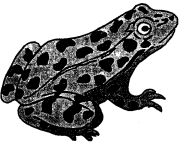
- _____________________________________
- _____________________________________
- Draw the safety wear used to handle plants.
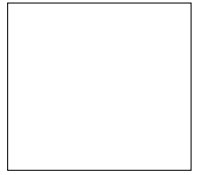
Safety gloves
Gloves - List any two examples of fungi.
- _________________________________
- _________________________________
SECTION B:
AGRICULTURE
- The process by which the soil is moved by wind or water from one place to another is called ____________________
- Name three farming practices that conserve water from the soil.
- ____________________________________
- ____________________________________
- _____________________________________
- Giving rise to a young one of the same kind is called _________________________________
(reproduction, feeding, response to change in environment) - Match the animal with where it lives.
- Draw and colour a chick.

- Name the gardening tools shown below.
______________________________
________________________________
- List down three methods of controlling soil erosion.
- ____________________________________________
- _____________________________________________
- _____________________________________________
SECTION C:
HOMESCIENCE (15 marks)
- Name the cleaning tool drawn below.
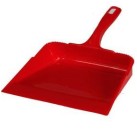 ___________________________________________
___________________________________________ - Name two uses of buttons in clothes and household articles.
- _____________________________________
- ______________________________________
- Give two tools which are used in needlework.
- ______________________________________
- _______________________________________
- Write 'true' or 'false' in the following statements.
- Using good table etiquette is good manners.______________________
- Being unkind and rude is good manners. _______________________
- Using technology wisely and safely is good manners. ____________________________
- Pouring water on a plain wooden surface can lead to _____________________________
(slipperiness, damage, baking) - The easiest way to stop the spread of germs is through _________________________
(sleeping long hours, washing hands) - Match the clothes with the time they are worn.
Cloth Time- Uniform Sleeping time
- Casual wear School time
- Pyjamas When at home
- Name two basic food groups.
- ______________________________________
- ______________________________________
MARKING SCHEME
Section A: Science and Technology
-
- Vomiting
- Dehydration
- Diarrhoea
-
- They grow
- They die
-
- Benas
- Mango tree
-
- Display what is being typed in the computer
- Used for typing
- Gives instructions when clicked
-
- Do not run when handling animals
- Approach animals with caution
- Avoid dangerous animals
-
- Firewood
- Charcoal
- Paraffin
-
- They are cold blooded
- They have moist skin
- Check diagram
-
- Mould
- Yeast
- Mushroom
Section B: Agriculture
- Soil erosion
-
- Mulching
- Covercropping
- Sleeping crops
- Reproduction
-
- Sty
- Coop
- Kennel
- Check diagram
-
- Jenbe
- Watering can
-
- Constructing gabbions
- Planting cover crops
- Making terraces
Section C:Homescience
- Dust pan
-
- Fastening
- Decorating
- Close and opening
-
- Tape measure
- Threads
-
- True
- False
- True
- Slipperiness
- Washing hands
-
- School time
- When at home
- Sleeping time
-
- Vitamins
- Proteins
Kiswahili Questions and Answers - Grade 5 End of Term 2 Exams Set 2
SEHEMU YA KWANZA: KUSILIKIZA NA KUZUNGUMZA (Alama 10)
Mwalimu asome kifungu kifuatacho kisha amwulize mwanafunzi maswali kwa sauti.
Kandanda hupendwa na huchezwa kote duniani. Ni mchezo unaoleta watu pamoja kwa amani na furaha. Zamani mchezo huu ulichezwa na wanaume pekee. Siki hizi, wanawake pia hucheza. Mchezo wa kandanada pia huitwa soka, ngozi ama kabumbu. Huchezwa na watu kumi na mmoja kila upande.
Maswali
- Kandanda hupendwa na kuchezwa wapi? _____________________________
- Zamani mchezo huu ulichezwa na nani? __________________________
- Majina mengine yenye maana sawa na kandanda in ______________________
- Mchezo wa soka huchezwa na watu wangapi kila upande? ______________________________
SEHEMU YA PILI: KUSOMA KWA SAUTI (Alama 20)
Soma kifungu kifuatacho kwa sauti
Wanyama wanaofugwa huitwa mifugo. Wanyama hawa ni kama mbuzi, kondoo, ng'ombe, ngamia na punda. Wanyama hawa wana faida nyingi sana. Mfugaji huwakamua ng'ombe ambao humpa maziwa ambayo humpa pesa nyingi akiyauza.
Maziwa pia hutumiwa kutengeneza siagi. Jbini hizi ni tamu sana. Kondoo hutupa sufi ambazo hutumiwa kutengeneza fulana. Maziwa ya mbuzi ni mazuri sana. Ngamia hutumiwa kubebea mizigo.
Maziwa yake pia hunywewa na watu wengine huamini kuwa ni dawa. Wanyama wote wanahitaji kutunzwa. Sharti waishi mahali safi na wapewe chakula cha kutosha ili wawe na afya nzuri.
SEHEMU YA TATU: UFAHAMU (ALAMA 5)
Soma kufungu kifuatacho kisha ujibu maswali.
Hodari alikuwa kifunguamimba wa Bwana na Bi Omar. Kwa jumla walikuwa watoto wanne; wasichana wawili na wavulana wawili. Familia hii ilikuwa na maisha mazuri siku zote. Watoto hawa walilelewa na kusomeshwa vizuri.
Kwa bahati mbaya, baba yao alifutwa kazi kule alikoajiriwa. Alifutwa kwa sababu wenzake walimfitini. Hapo ndipo maisha yalipobadilika katika familia hii.
Maisha yakawa magumu. Ilibidi Hodari ambaye ni kifunguamimba kutafuta kibarua ili aweze kuwasaidia wazazi wake na wadogo wake. Kazi hizi za vibarua alikuwa anazifanya baada ya kutoka shuleni. Wakati mwingine chakula na mahitaji mengine yakakosekana. Ilibidi Hodari aache shule na kuamua kutafuta kazi ya uyaya. Kazi hizi zilikuwa nyingi kijijini.
Tajiri mmoja alimpa kazi ya nyumbani. Kazi ilikuwa ngumu sana kwa mtoto wa shule kama vile Hodari. Aliteseka sana kwa kukosa nafasi ya kucheza na watoto wenzake. Mizigo mizito aliyobebeshwa ilimwacha akiwa mchovu kwelikweli.
Kwa bahati nzuri msamaria mwema mmoja alimwonea huruma na kuamua kumsaidia. Pamoja na mambo aliyosaidiwa nayo ni ajira kwa wazazi wake.
Maswali
- Kisa hiki kinahusu mtoto aitwaye ___________________________
- Ni nani alifutwa kazi? ______________________________
- Ni vibaya kumnyima mtoto haki ya ________________________________
- Hapo mwanzoni maisha ya Hodari na wadogo wake yalikuwa ___________________________
- Taja kazi moja aliyofanyishwa Hodari _______________________
SEHEMU YA NNE: SARUFI (ALAMA 25)
Kanusha sentensi hizi.
- Wewe unapenda chakula kitamu.
_______________________________________ - Alisoma hadithi.
_______________________________________ - Yeye ataegesha gari karibu na soko.
________________________________________
Jibu kwa usahihi kwa kuchangua majibu kutoka kwa mabano.
Baada ya siku____4____ (mingi, nyingi) kuku alianza ___5___ (kutaga, kutoa) mayai. Alifurahi sana.
Alitaka mayai ____6____ (hiyo, hayo) yote yatoe vifaranga. Jioni ____27____ (monja, moja), aliporudi kibandani alianza kuatamia mayai ____8____ (zake, yake).
Ambatanisha nomino hizi ili kuunda nomino ambata
A B
- Mwana hazina
- Askari sesere
- Mweka kanzu
- Tegua kitendawili kifuatacho: Achora lakini hana kalamu _________________________
- Kisawe cha barabara ni ______________________
- Taja viungo viwili vya upishi.
- _______________________________
- _______________________________
- Tunga sentensi ukitumia nomino hizi.
- Upishi _________________________________
- Picha _________________________________
- Jibu maagano haya. "Alamsiki" _____________________________________
-
Kifaa hii hutumika _____________________________________ - Kikundi cha matunda huitwa__________________ (pakacha, mtumba, numbi)
-
Kifaa hiki huitwa __________________________.
Andika sentensi zifuatao kwa wingi. - Ndoo hii imejaa maji ________________________________
- Ukuta huu umebomoka ____________________________________
- Sentensi moja katika ushairi huitwa________________________________
-
Hii ni namba gani? _____________________________________________
SEHEMU YA TANO: KUANDIKA (Alama 20)
Andika insha ya kusisimua ukizingatia maagizo uliyopewa
Andika insha ya kusisimua kuhusu:
CHAKULA UKIPENDACHO
_______________________________________________________________________________________________________
_______________________________________________________________________________________________________
_______________________________________________________________________________________________________
_______________________________________________________________________________________________________
_______________________________________________________________________________________________________
_______________________________________________________________________________________________________
_______________________________________________________________________________________________________
_______________________________________________________________________________________________________
_______________________________________________________________________________________________________
_______________________________________________________________________________________________________
_______________________________________________________________________________________________________
_______________________________________________________________________________________________________
_______________________________________________________________________________________________________
_______________________________________________________________________________________________________
_______________________________________________________________________________________________________
_______________________________________________________________________________________________________
_______________________________________________________________________________________________________
_______________________________________________________________________________________________________
_______________________________________________________________________________________________________
_______________________________________________________________________________________________________
_______________________________________________________________________________________________________
_______________________________________________________________________________________________________
_______________________________________________________________________________________________________
_______________________________________________________________________________________________________
_______________________________________________________________________________________________________
MARKING SCHEME
Sehemu ya kwanza
- Kote
- Na wanaume
- Kambumbu, soka
- Kumi na mmoja
Sehemu ya tatu
- Hodari
- Bwana Omar
- Kucheza/kula/kuomba
- Mazuri
- Kubeba mizigo mizito
Sehemu ya nne
- Wewe hupendi chakula kitamu
- Hakusoma hadithi
- Yeye hataegesha gari karibu na soko
- Nyingi
- Kutaga
- Haya
- Moja
- Yake
- Sesere
- Kanzu
- Hazina
- Konokono
- Njia/baraste
-
- Pilipili
- Masala
-
- Hakiki kwa usahihi
- hakiki kwa usahihi
- Binuru
- Kuonyesha saa
- Pakacha
- Kiwambo
- Ndoo hizi zimejaa maji
- Kuta hizi zimebomoka
- Mshororo
- Thelathini









